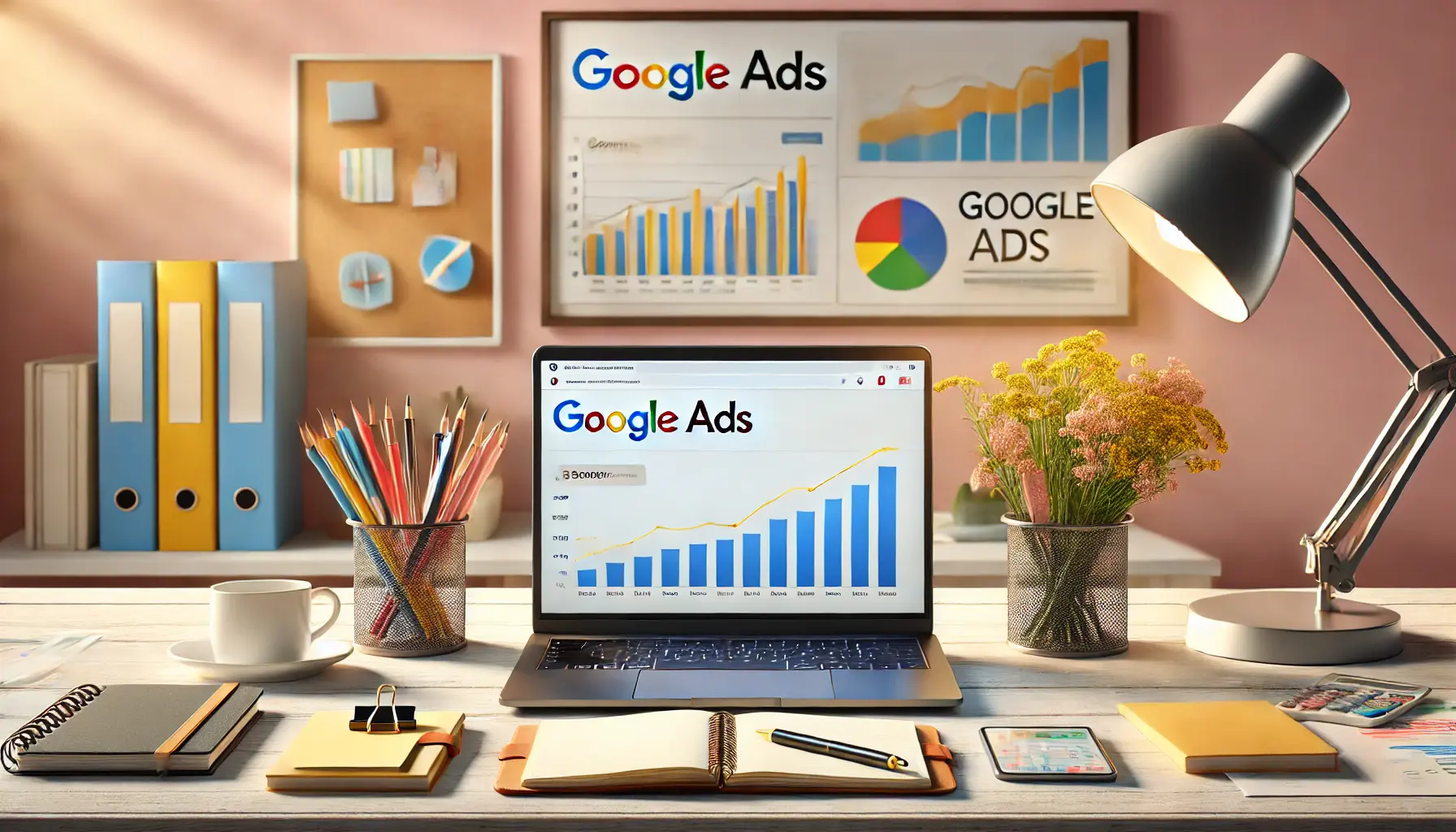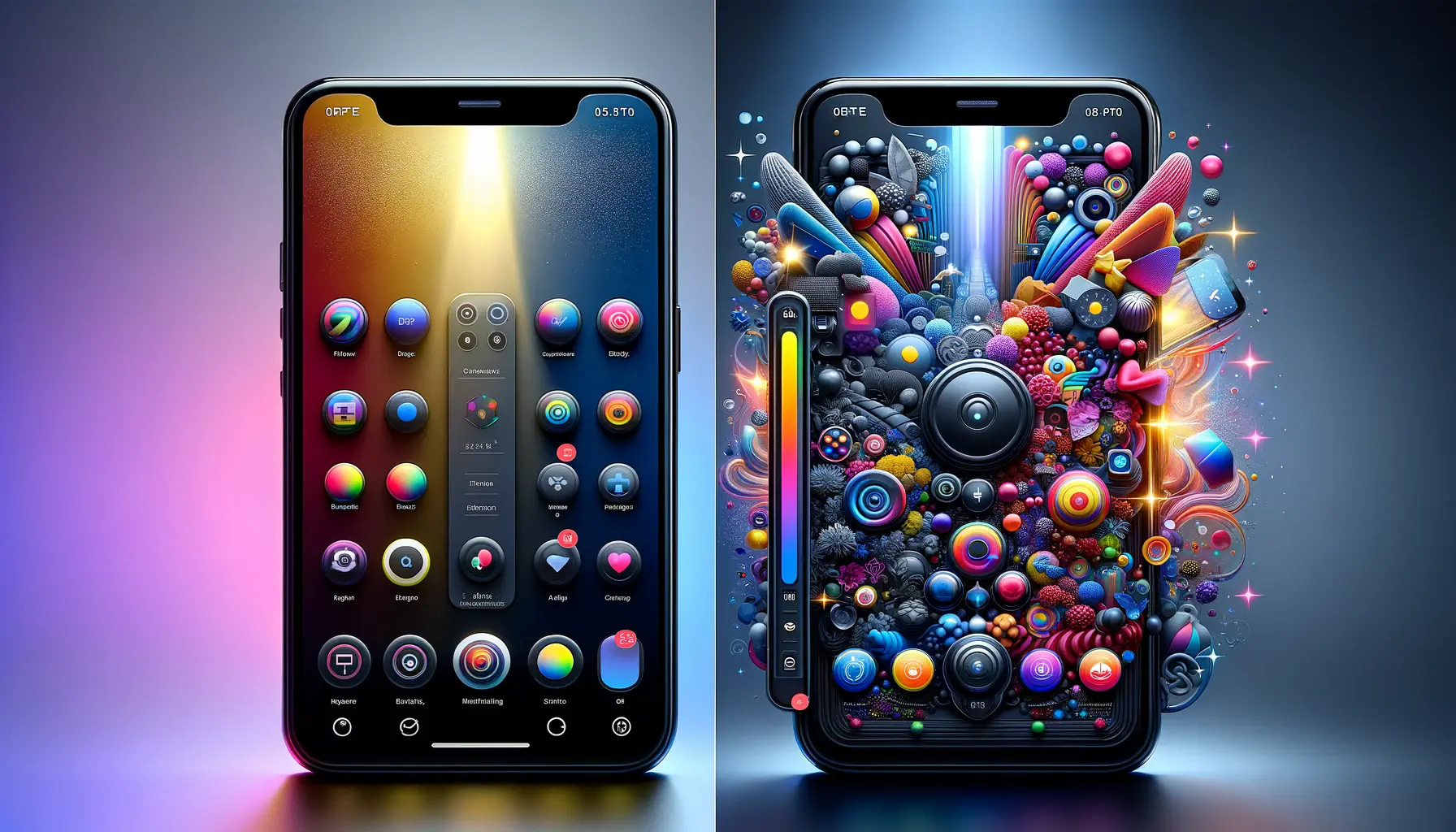In today’s digital age, mobile optimization has become the primary means by which people access the internet.
Whether it is social media browsing, online shopping, or content consumption, smartphones and tablets are at the forefront.
This has serious implications for advertisers, especially those utilizing platforms like Instagram.
To ensure your ads resonate with the mobile-driven audience, understanding and implementing mobile optimization is essential.
- Why Mobile Optimization is Crucial in Instagram Ads
- Key Mobile-Optimized Instagram Ad Creative Strategies
- Technical Aspects of Mobile Optimization in Instagram Ads
- Targeting and Analytics: Enhancing Mobile Ad Performance
- Case Studies: Effective Mobile-Optimized Instagram Ad Campaigns
- Maximizing Success with Mobile-Optimized Instagram Ads
- Frequently Asked Questions on Instagram Ads Mobile Optimization
Why Mobile Optimization is Crucial in Instagram Ads
Have you ever wondered how many times you reach for your phone daily?
You’re not alone.
A majority of users now favor mobile devices for internet activities, making it necessary to optimize your advertising efforts accordingly.
Mobile optimization involves formatting and designing your ads to provide the best experience on mobile devices.
It is not just a technical adjustment but also an approach to aligning your content with the behavior and expectations of mobile users.
When your Instagram ads are optimized for mobile, they load faster, display correctly, and engage the audience better, leading to higher conversion ratesThe percentage of users who complete a desired action, such as making a purchase, after clicking an ad..
The Impact of Poor Mobile Optimization
- Users tend to ignore ads that are not formatted correctly on mobile screens.
- Slow-loading ads frustrate potential customers and increase bounce rates.
- Poorly optimized ads lead to wasted ad spend and lower return on investment.
Consider this: how many times have you scrolled past an ad that wasn’t properly formatted on your mobile phone?
Or perhaps you’ve clicked on an ad, only to wait endlessly for the page to load?
These moments frustrate potential customers.
By optimizing for mobile first, you ensure your audience has a seamless and engaging experience, making them more likely to convert.
Instagram’s Mobile-First Nature
Instagram and similar platforms are inherently mobile-first.
Most of their user interfaces and features are designed with mobile users in mind.
Aligning your ads with this design principle ensures that they integrate naturally into users’ feeds, stories, and explore pages, making them more appealing and less intrusive.
In summary, mobile optimization is not just a technical necessity but a strategic approach to meeting your audience where they are.
By prioritizing mobile-first designs and content, you enhance user experience, drive engagement, and ultimately achieve higher returns on your Instagram advertising spend.
Optimizing Instagram ads for mobile ensures a seamless user experience, reduces bounce ratesThe percentage of visitors who leave a webpage without interacting further., and improves ad performance.
Key Mobile-Optimized Instagram Ad Creative Strategies
Creating effective Instagram ads optimized for mobile devices is essential in today’s online marketing landscape.
By implementing the right strategies, you can enhance user engagement and achieve better results.
Let’s explore some effective approaches:
1. Creating Effective Visuals to Engage Mobile Users
Visual content is the backbone of Instagram marketing.
To grab the attention of mobile users, consider the following:
- Use High-Quality, Eye-Catching Images: Ensure your images are bright and vibrant to stand out in users’ feeds.
- Maintain Consistent Branding: Utilize colors, fonts, and imagery aligned with your brand identity for recognition.
- Leverage User-Generated Content: Incorporate customer-generated content to build trust and authenticity.
2. Writing Concise and Powerful Ad Copy
Excellent ad copy complements your visuals and conveys your message effectively.
Here’s how to make your text impactful:
- Be Direct and Clear: Express your value proposition concisely.
- Include Effective Call-to-Actions (CTAs): Direct users to the intended action, such as ‘Shop Now’ or ‘Learn More’.
- Use Emojis Judiciously: Inject personality into your copy but avoid overuse that may distract users.
3. Leverage Mobile-Friendly Ad Formats: Stories, Reels, and Carousel Ads
Instagram provides multiple ad formats designed for mobile users.
Utilizing the right format can significantly boost engagement:
- Stories Ads: Full-screen vertical ads that appear between user stories, ideal for immersive experiences.
- Reels Ads: Short video ads that engage users with entertaining content.
- Carousel Ads: Allow users to swipe through multiple images or videos, perfect for showcasing product lines or storytelling.
By implementing these strategies, you can create mobile-optimized Instagram ads that not only capture attention but also drive meaningful interactions and conversions.
Using high-quality visuals, concise ad copy, and engaging ad formats like Stories and Reels can significantly enhance ad performance.
Technical Aspects of Mobile Optimization in Instagram Ads
Technically optimizing your Instagram ads for mobile optimization is crucial to achieving high engagement and conversions.
Here are key technical considerations to enhance the performance of your ads:
1. Mobile Optimization of Ad Dimensions and Resolutions
To ensure your ads display well on various mobile devices, consider the following:
- Follow Instagram’s Recommended Specifications: Utilize the platform’s guidelines for image and video dimensions to achieve optimal display quality.
- Use High-Resolution Visuals: High-quality images and videos ensure clarity on devices with different screen sizes and resolutions.
- Test Across Devices: Preview your ads on multiple mobile devices to verify consistent appearance and functionality.
2. Ensuring Fast Load Times and Responsive Design
Fast-loading, responsive ads improve user experience and reduce bounce rates.
Here’s how to enhance load speed and design responsiveness:
- Compress Media Files: Reduce video and image file sizes without compromising quality for quicker load times.
- Implement Responsive Design Principles: Create ads that adapt seamlessly to different screen orientations and sizes, ensuring an optimal viewing experience across all devices.
- Minimize Redirects: Limit the number of redirects in your ad’s landing pages to decrease load times and improve user experience.
3. Utilizing Proper Call-to-Actions for Mobile Engagement
Effective and well-placed call-to-actionsElements in an ad or webpage that prompt users to take a specific action, such as clicking a button. (CTAs) guide users toward desired actions, enhancing engagement and conversions.
- Utilize Action-Oriented Language: Use compelling verbs like ‘Shop Now,’ ‘Sign Up,’ or ‘Learn More’ to encourage immediate action.
- Make CTAs Visible: Position CTAs prominently within the ad, using contrasting colors and clear fonts to attract attention.
- Optimize for Touch Interaction: Design CTA buttons that are easily tappable, ensuring appropriate size and spacing for mobile users.
By streamlining these technical aspects, you can create mobile-optimized Instagram ads that provide a seamless and engaging experience, leading to higher user satisfaction and improved campaign performance.
Follow Instagram’s recommended ad dimensions, compress media for fast loading, and design for responsiveness to optimize ad performance.
Targeting and Analytics: Enhancing Mobile Ad Performance
Properly targeting your audience and analyzing ad performance are crucial aspects of a successful mobile optimization strategy for Instagram advertising.
By leveraging Instagram’s mobile-first targeting options and monitoring key performance indicators (KPIs), you can increase engagement and maximize conversions.
Utilizing Instagram’s Mobile-First Targeting Capabilities
Instagram provides various targeting options to help you reach the right audience.
These include:
- Location Targeting: Reach your audience based on country, region, city, or even specific addresses to ensure your ads appear in relevant areas.
- Demographic Targeting: Filter your audience by age, gender, language, and other demographic factors to align with your ideal customer profile.
- Interest and Behavior Targeting: Target users based on their interests, online activities, and platform behavior, ensuring more precise ad delivery.
- Custom Audiences: Re-engage users who have previously interacted with your business, such as website visitors or app users, with tailored ad content.
- Lookalike Audiences: Expand your reach by targeting users similar to your existing customers, increasing engagement and conversion opportunities.
By employing these targeting features, you can ensure your ads are delivered to users most likely to be interested in your services or products, enhancing your campaign’s effectiveness.
Monitoring Key Performance Indicators for Mobile Ads
Tracking the right metrics is essential to evaluating the success of your Instagram ads.
Key performance indicators to monitor include:
- Impressions: The total number of times your ad is displayed. High impressions indicate broad visibility.
- Reach: The number of unique users who saw your ad. This helps gauge the potential audience size.
- Click-Through Rate (CTR): The percentage of users who clicked on your ad after seeing it. A higher CTR suggests engaging ad content.
- Cost Per Click (CPC): The average cost incurred for each click on your ad. Monitoring CPC ensures optimal ad spend allocation.
- Conversions: The number of users who performed a desired action (e.g., making a purchase) after clicking on your ad. Tracking conversions measures the direct impact of your ads on business goals.
- Return on Ad Spend (ROAS): The revenue generated for every dollar spent on advertising. A higher ROAS indicates a more profitable campaign.
Consistently analyzing these KPIs allows you to identify areas for improvement and fine-tune your strategies to achieve the best ad performance.
A/B Testing: Refining Strategies for Best Mobile Engagement
A/B testing, or split testingAnother term for A/B testing, where different versions of an ad or webpage are tested to determine which performs better., compares two versions of an ad to determine which performs better.
To conduct successful A/B tests:
- Test One Variable at a Time: Focus on a single element (e.g., headline, image, CTA) to accurately measure its impact.
- Use a Sufficient Sample Size: Ensure the test reaches enough users to yield statistically significant results.
- Run Tests in Parallel: Conduct tests simultaneously to eliminate external factors affecting results.
- Analyze and Apply Findings: Use insights gained from testing to optimize your ads for greater engagement and conversions.
By systematically testing and refining ad components, you can enhance mobile optimization efforts, boost user engagement, and achieve better advertising results.
Leverage Instagram’s mobile-first targeting options and track key performance indicators to refine your ad strategies.
Case Studies: Effective Mobile-Optimized Instagram Ad Campaigns
Examining successful mobile-optimized Instagram ad campaigns can provide valuable insights into the best strategies.
Below are some noteworthy examples:
1. Mathieu Laca’s Art Promotion
Canadian artist Mathieu Laca aimed to boost brand awareness and website traffic.
With the assistance of Adam Riedel from Art Storefront, he launched Instagram ads promoting his contemporary portraits.
The campaign delivered an impressive 688% increase in web traffic, showcasing the power of visually appealing content in mobile-optimized advertising.
2. Wayfair’s User-Generated Content Strategy
Wayfair, a home furnishings retailer, encouraged customers to share images of their Wayfair-decorated homes on social media using the hashtag #WayfairAtHome.
By sharing this user-generated content with tagged product links, Wayfair provided a seamless mobile-optimized shopping experience, leading to increased engagement and sales.
3. Orangetheory’s Consistent Branding
Fitness brand Orangetheory launched a hashtag campaign, #Orangetheory, inviting members to share their workout experiences.
By reposting user-generated content with consistent branding, Orangetheory strengthened community engagement and enhanced brand loyalty.
4. IconScout’s Carousel Ads
IconScout used carousel adsA type of Instagram ad format that allows users to swipe through multiple images or videos in a single ad. to showcase a variety of icon styles, effectively targeting web and app designers.
The ‘Learn more’ call-to-action guided users to explore their product catalog, enhancing engagement and conversions.
5. Wix’s Instagram Story Ads
Wix leveraged Instagram Story ads to demonstrate how users can make their websites mobile-friendly using Wix Studio’s responsive AI.
The ‘Learn more’ button directed potential customers to their website, highlighting the platform’s mobile optimization capabilities.
These case studies illustrate that well-executed mobile-optimized Instagram ad campaigns can significantly enhance brand awareness while driving measurable business success.
Successful campaigns like Wayfair and Wix demonstrate how strategic mobile optimization can boost engagement and conversions.
Maximizing Success with Mobile-Optimized Instagram Ads
In an era where mobile phones dominate online behavior, mobile optimization is not an option—it’s a necessity.
As a mobile-first platform, Instagram requires advertisers to align their strategies with user behavior to drive maximum engagement, conversions, and return on investment.
With the right approach, businesses can create ads that not only capture attention but also generate meaningful interactions.
Key Takeaways from Mobile Optimization Strategies
Throughout this article, we have explored various aspects of mobile optimization for Instagram ads.
Here are the key takeaways:
- Understanding Mobile-First Advertising: Recognizing that Instagram is accessed primarily through mobile devices highlights the importance of developing ads with a mobile-first approach.
- Creating Engaging Visuals: High-quality, mobile-optimized images and videos ensure that ads stand out and encourage interaction.
- Optimizing Ad Creatives: Utilizing Instagram’s diverse ad formats such as Stories, Reels, and Carousel Ads can maximize engagement and performance.
- Technical Considerations: Optimizing resolution, load speed, and responsive design enhances the user experience and ensures seamless ad delivery.
- Utilizing Targeting and Analytics: Strategic audience targeting and performance tracking improve ad relevance and campaign effectiveness.
- Enhancing Campaigns with A/B Testing: Conducting A/B tests across different ad components helps determine what works best for mobile audiences.
The Future of Mobile Optimization in Instagram Ads
As digital marketing continues to evolve, so do mobile optimization strategies.
Businesses now have access to advanced tools like AI-driven personalization, interactive ad formats, and in-depth analytics to further refine their Instagram ad campaigns.
Here’s what the future holds:
- More Personalization: AI-powered ad targeting will further improve the delivery of hyper-relevant content to mobile users.
- Enhanced Mobile Shopping Experience: Instagram’s shopping features will continue to expand, making mobile transactions even more seamless.
- Increased Emphasis on Short-Form Video: Interactive video ads and Reels will become the standard for mobile engagement.
Final Thoughts on Mobile Optimization for Instagram Ads
Investing in mobile optimization for Instagram ads is essential for businesses looking to expand their reach and improve ad performance.
By understanding mobile user behavior, creating visually engaging and responsive ads, and continuously refining strategies based on data, brands can build successful Instagram advertising campaigns with high engagement and conversion rates.
Now is the time to implement these best practices and ensure your ads are mobile-optimized, visually compelling, and strategically targeted.
By staying ahead of mobile advertising trends, you can position your business for long-term success on Instagram and beyond.
Continuous A/B testing, audience targeting, and creative optimization are key to achieving long-term success with mobile Instagram ads.
Enjoyed the article? Let its author handle your social media ads. Visit our service page to get started!
Frequently Asked Questions on Instagram Ads Mobile Optimization
Mobile optimization in Instagram advertising refers to optimizing ads so they function correctly on mobile devices, ensuring maximum user experience and engagement.
Mobile optimization is crucial as most Instagram users access the platform via mobile devices.
Ads must render properly and encourage seamless interaction to be effective.
Mobile-optimized ads drive higher engagement, increased click-through rates, and overall improved campaign performance on Instagram.
Essential characteristics include responsive designA design approach that ensures a website or ad adapts to different screen sizes and devices., fast loading speeds, clear calls-to-action, and easily readable content on smaller screens.
Responsive design allows ads to dynamically adjust their layout and format for different screen sizes, improving readability and engagement on Instagram.
Yes, by enhancing user experience and engagement, mobile optimization can significantly increase conversion rates for Instagram ads.
AI analyzes user data for ad targeting, delivering personalized ad experiences that better resonate with individual users on Instagram.













